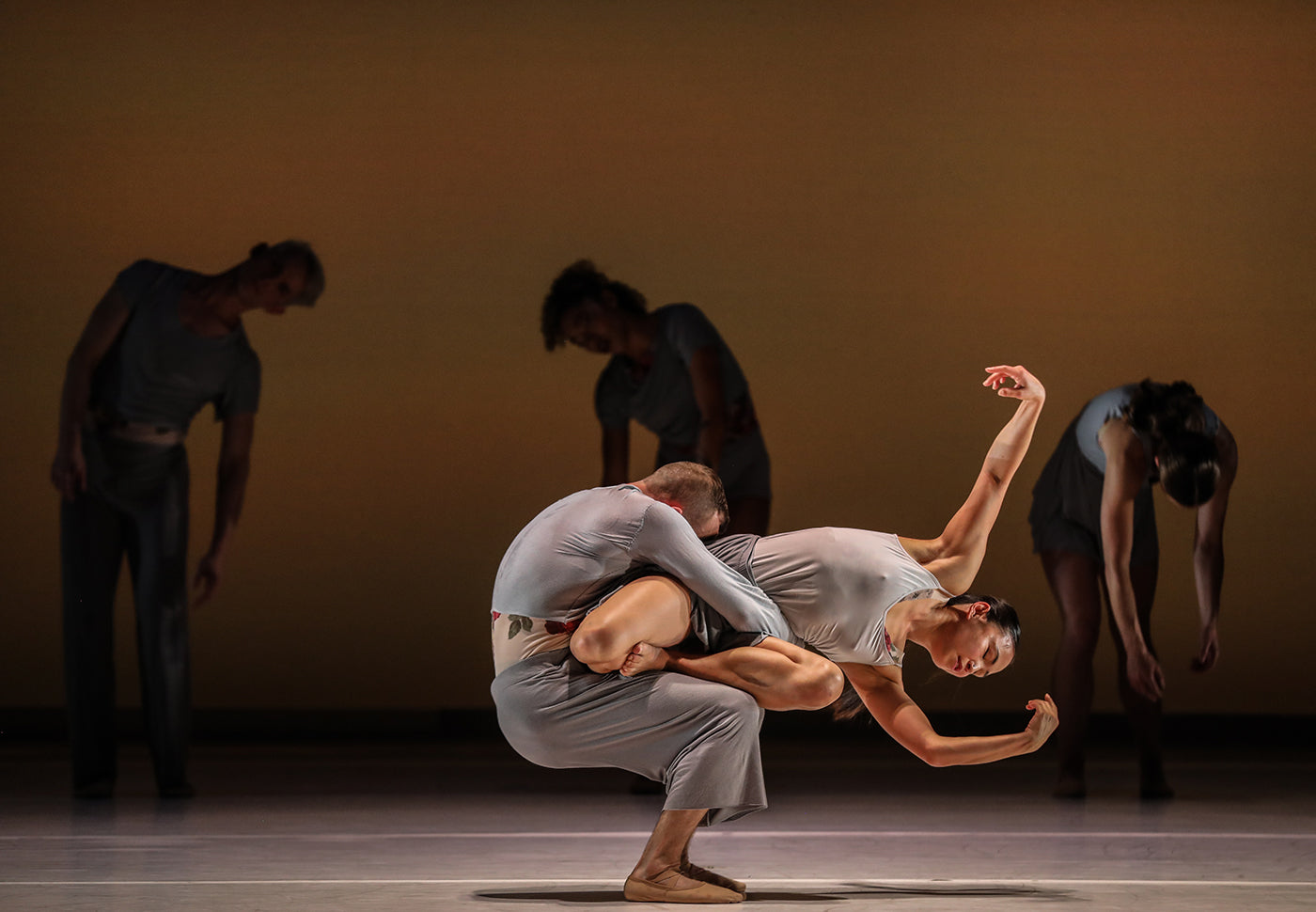Rarely performed after 1960, and based on Hans Christian Andersen's fairytale Isjomfruen (The Ice Maiden) “The Fairy's Kiss” is a seemingly frothy confection, which twists into something perverse. Stravinsky's score is melodious and ecstatic, then powerful. Essentially, this ballet is an adult folk tale, where the titular Fairy is a seductress wrecking a relationship. Andrew Peasgood's Young Man, the would-be groom, cursed as a baby by a kiss to stay forever with the Fairy, is a touch jejune, all wide eyes, big strides and playful folk spins. He's like a small woodland creature, a naif.
In sharp contrast, Constance Devernay's en pointe, light stepping Fairy is the epitome of capricious hauteur in her sparkly tutu, and even the pirouetting nymphs surrounding and protecting her are a sinister presence. There is a nod to Red Riding Hood in the Gypsy disguise she assumes (Mia Thompson's flirty, swishing skirts also invoking Carmen) and the spectral spell is thus complete.
What follows is an uneasy ménage à trois where Peasgood's Young Man must choose between his innocent, fawn-like Fiancée (Bethany Kingsley-Garner) and the raunchy Fairy. The kiss becomes less innocent in later years, as Peasgood holds Devernay by the legs in a provocative scene. While the company and MacMillan's choreography are superb, particularly in the playful melding of folk circle phrasing and ballet, the narrative is a little questionable, reinforcing feminine virgin/scarlet woman stereotypes, and it feels a little dated to the modern spectator.
Far more interesting is Christopher Hampson's take on “The Rite of Spring”—a stunning, visceral piece and a real punch to the gut. Exploring issues of ritual, power and dominance, it stands as both a religious allegory and modernist indictment of war. The Paganism of the original piece is replaced by a less obvious or defined belief system. The first part focuses on the struggle between two hakama-clad brothers (Christopher Harrison and Constant Vigier) to assert masculinity. Their padded cell-like environment becomes a battleground, as they grapple together in repeated gestures, poised like arrows ready to hit all targets. The elder, Harrison, is a domineering sadistic bully, with larger swaggering posturing; Vigier is more graceful and guarded. The clenched fists and strides are initially a fraternal war; quickly becoming emblematic of wider conflict. They attempt to scale the walls, almost flying up in moves which emulate parkour. When Sophie Martin's slinky diva of destruction, Faith, appears in a white shift dress, stealthily tiptoeing around the brothers, this uneasy triangle of people is rendered symbolic. Martin is less readable, more mutable, always on the periphery, watching, as an ambivalent presence with her small, childlike steps. It seems that Hampson is playing with ideas of comfort in theology, and clinging to unknowable forces in darkest times.
A stool is introduced to the space, and Harrison pulls off Vigier's hakama costume. Clad in combat fatigues and boots, Harrison is a soldier of destruction, pushing his brother to the very edge of sanity by imposing his beliefs on him. Vigier is the sacrificial lamb, with a hood forced over his head, producing disturbing similarities to the images of Guantanamo Bay. The only possible escape is through certain death—and here Martin now plays an Angel of Death, an oddly soft figure in black. The punches, kicks and violent twists mimic Stravinsky's classic, brutal score with its ominous bassoons and thumping bass drums and timpani. The futility of war is thrillingly, uncompromisingly portrayed.









comments